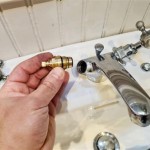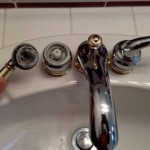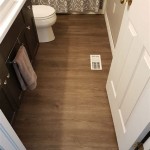How to Fix a Bathroom Sink Stopper Stuck Shut
A stuck bathroom sink stopper can be a frustrating inconvenience. Whether it's refusing to open or close, or completely jammed shut, a malfunctioning stopper can disrupt your routine and make basic tasks like washing your hands or filling the sink a challenge. Thankfully, most stuck bathroom sink stoppers can be fixed with some basic tools and a bit of know-how. This article explores common causes for a stuck stopper and outlines effective steps to resolve the issue.
Understanding Common Causes
Before diving into the fix, it's essential to understand what might be causing the stopper to stick. Here are some of the most common culprits:
- Hair and Debris: Over time, hair, soap scum, and other debris can accumulate around the stopper mechanism, obstructing its movement. This is particularly common in sinks used by multiple individuals or with long hair.
- Mineral Buildup: Hard water can leave mineral deposits on the stopper and its surrounding parts, leading to stiffness and friction.
- Mechanical Failure: The stopper mechanism itself might have a broken or worn-out part, preventing it from functioning properly. This could be due to age, overuse, or accidental damage.
Troubleshooting and Repairing a Stuck Stopper
Once you've identified the potential cause of the stuck stopper, you can proceed with the appropriate repair method. Below are detailed steps for each scenario:
1. Cleaning and Removing Debris
This is the simplest and most effective solution for most stuck bathroom sink stoppers.
- Remove the drain cover: If your sink has a decorative cover over the drain, remove it to expose the stopper mechanism.
- Clean the stopper: Use a small tool like a straightened paperclip or needle-nose pliers to carefully remove any hair, debris, or soap scum that has accumulated around the stopper.
- Use a cleaning solution: If mineral buildup is the culprit, soak a cloth in white vinegar or a commercial descaler and wrap it around the stopper for 15-20 minutes. This will help soften the mineral deposits.
- Flush with water: After cleaning, flush the drain with hot water to ensure all debris and cleaning solution is removed.
- Test the stopper: Try opening and closing the stopper to check if it's now operating smoothly.
2. Replacing a Corroded Stopper
If the stopper is corroded beyond repair, you will need to replace it.
- Choose a replacement stopper: Select a stopper that's compatible with your sink's drain type. Stopper designs vary, so choose one that suits your needs, such as a lift-and-turn or push-and-pull type.
- Remove the old stopper: Depending on the stopper type, either unscrew, pull, or lift it out of the drain. Some stoppers might require tools like pliers or a wrench to remove.
- Install the new stopper: Follow the instructions provided with the new stopper for installation. This typically involves screwing or pushing the stopper into the drain hole until it's secure.
- Test the new stopper: Once installed, check if the new stopper operates smoothly and without any resistance.
3. Addressing Mechanical Failure
Replacing the entire stopper mechanism is necessary in cases of mechanical failure.
- Locate the stopper mechanism: The mechanism is typically located beneath the sink, connected to the drain pipe.
- Access the mechanism: Remove any panels or access covers to expose the mechanism. You might need to disconnect the drain pipe for better access.
- Remove the old mechanism: Carefully dismantle the old mechanism, taking note of how the parts are connected.
- Install the new mechanism: Connect the new mechanism, following the manufacturer's instructions. Ensure all parts are securely attached and the drain pipe is properly reconnected.
- Test the new mechanism: Once installed, check if the new stopper mechanism functions as expected.
Preventive Maintenance
To avoid future issues with your bathroom sink stopper, consider these preventative measures:
- Regularly clean the drain: Use a drain cleaner or a solution of baking soda and vinegar to remove hair and debris regularly.
- Use a strainer: Place a strainer over the drain to catch hair and other debris before it reaches the stopper mechanism.

Quick Tip 26 Pop Up Stopper Sticks Misterfix It Com
I Closed My Sink Drain Stopper And Now It Won T Open Again Is There Any Way That Can Repair This Without Hiring A Plumber Quora

How To Fix A Bathroom Sink Stopper Step By Guide London Post

How To Fix A Stuck Pop Up Drain Plug
How To Get A Bathroom Sink Plug Removed When It Won T Un Quora

How To Repair A Bathroom Sink Stopper
How To Get A Bathroom Sink Plug Removed When It Won T Un Quora

How To Fix A Bathroom Sink Stopper That Is Stuck Shut In Five Steps Plug

How To Fix A Stuck Pop Up Drain Plug

My Pop Up Drain Is Not Draining Water
Related Posts







